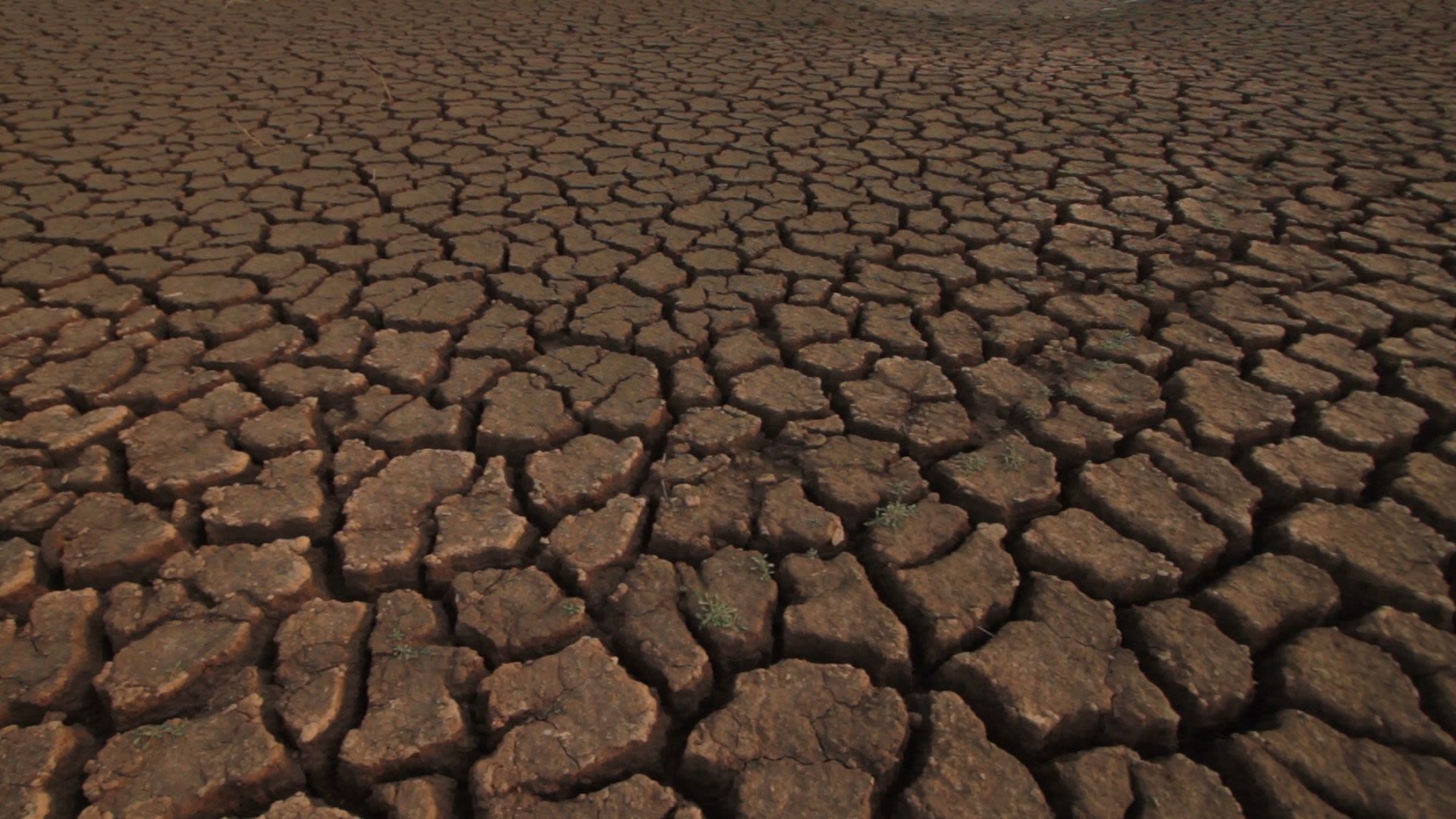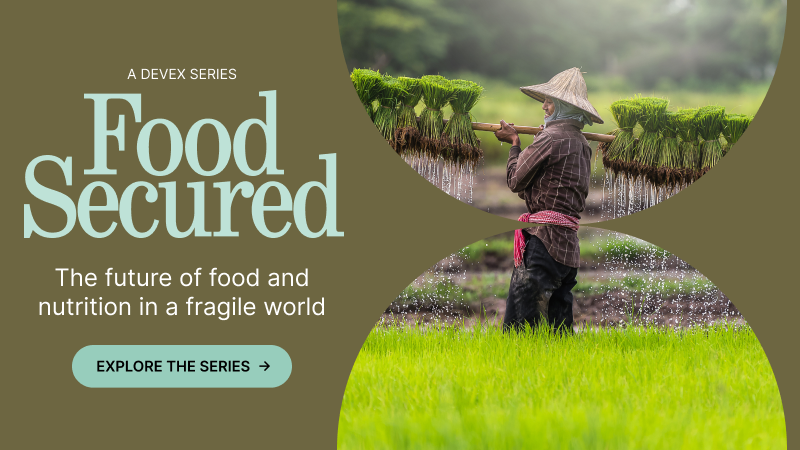Which countries are facing the worst of the global food crisis?
With the food and nutrition crisis tightening its grip in 2023, these are the hunger hotspots we should be most concerned about.

An estimated 349 million people across 79 countries are facing acute food insecurity.
Meanwhile, this year global food supplies are projected to drop to a three-year low.
These 24 countries, 16 of which are in Africa, have been designated by the Food and Agriculture Organization and the World Food Programme as “hunger hotspots.”
Source: World Food Programme
Figures included in the map are from 2022 except for Syrian Arab Republic and Zimbabwe (all 2021).
The Horn of Africa is facing its longest drought in over 40 years, following five consecutive failed rainy seasons in Somalia, northern and eastern Kenya, and eastern and southern Ethiopia.
This has led to below-average harvests and crop failures, as well as the deaths of millions of livestock. Many families have been forced to leave their homes in search of food, water, and pasture for animals, and up to 26 million people are estimated to be facing an acute food and livelihood crisis. With the region currently undergoing another season of below-normal rainfall, the situation is expected to worsen.
Meanwhile, conflict in Ethiopia’s northern Tigray, Amhara, and Afar regions has damaged livelihoods, exacerbating food insecurity. An estimated 23.6 million people were food insecure in Ethiopia in 2022, 5.6 million more than the previous year.
In South Sudan, ongoing floods, prolonged conflict, and high inflation mean that almost two-thirds of the population is expected to face acute levels of food insecurity in the coming months.
And in Sudan, soaring food prices, intercommunal conflict and escalating insecurity have led to an estimated 7.7 million food insecure people.
Despite having the highest agricultural potential in Africa, with approximately 80 million hectares of arable land, the Democratic Republic of Congo is facing the continent’s biggest food crisis. More than 26 million people are projected to face extreme hunger in the first half of this year.
Persistent conflict in the eastern areas of the country, economic decline, disease outbreaks, and climate change all contribute to the country’s ongoing food security crisis.
Ongoing conflict and high food and fuel prices have created a situation of acute food insecurity in the Central African Republic. With 50% of the population not eating enough, the country has one of the highest proportions of critically food-insecure people in the world. More than 1 in 5 people are currently displaced either within CAR or in neighboring countries.
In Nigeria, more than 19 million people were facing hunger in 2022 and an estimated 25 million people are projected to be at risk of facing hunger this year, according to UNICEF. The ongoing conflict in the northeastern states of Borno, Adamawa, and Yobe means humanitarian access is extremely limited, and communities are unable to receive food aid.
Nigeria is also being affected by extreme weather patterns, with widespread flooding damaging more than 676,000 hectares of farmlands last year.
Conflict between state and nonstate armed groups in Burkina Faso, Mali, and Niger has led to the displacement of nearly 3 million people in the Sahel region. This has disrupted livelihoods and caused food shortfalls, driving up the price of staples such as coarse grains. Above-average rainfall and high river levels are also expected to increase the risk of floods this year.
Zimbabwe’s population is facing triple-digit inflation rates as a result of monetary policy mismanagement, and poor households are struggling to meet their food and nonfood needs.
In Malawi, low crop production and increasing prices of fertilizer and seeds have doubled the number of people facing food insecurity.
And in Madagascar, consecutive droughts and cyclones have damaged crops and tightened food supplies.
Yemen has one of the highest rates of child malnutrition in the world, owing largely to the effects of more than eight years of conflict between Iranian-backed Houthis and the internationally recognized government, supported by a Saudi-led coalition. The country imports 90% of its food, including 42% of its wheat from Ukraine. Many families have had to reduce the quantity and quality of food consumed due to soaring prices, take on more debt to pay for basic necessities or sell assets such as livestock and machinery.
Twelve years of conflict have crippled Syria’s economy and food production, leading to a nearly twelvefold increase in prices since 2020. More than half of Syria’s population — or 12 million people — are facing hunger, and over the past few years, severe droughts have further affected food production.
With the country grappling with an economic crisis following the takeover by the Taliban in August 2021, Afghanistan is at its highest risk of famine in 25 years. Four million people are acutely malnourished, including 3.2 million children under the age of 5, according to WFP. Nine out of 10 households are not consuming enough food, the highest level in the world. Frequent environmental disasters such as droughts and floods also limit the productivity of the agricultural sector.
Pakistan is still recovering from the catastrophic effects of last summer’s monsoon floods, which affected around 33 million people, destroyed 2 million acres (over 809,000 hectares) of crops, and killed over 700,000 livestock.
This exacerbated an already fragile economic situation caused by the ripple effects of Russia’s war in Ukraine and the lingering economic impacts of the COVID-19 pandemic. Supply chain disruptions due to the war, coupled with poor government planning in the purchasing of imports, have led to soaring prices of wheat and flour.
Sri Lanka’s economy is in a state of collapse resulting from a lack of foreign reserves and mounting foreign government debt, which has led to soaring inflation and shortages of food, medicine, and fuel. A ban on imports of chemical fertilizers and pesticides, introduced between May and November 2021, led to widespread crop failures and further exacerbated levels of food insecurity. Half of Sri Lankan households are cutting their children’s food intake, according to a report by Save the Children.
The high price of fertilizers has led to soaring production costs and rising food inflation in Guatemala and Honduras. Above-average rainfalls are expected to exacerbate the situation this year.
Around 22% of children in Haiti are chronically malnourished, according to Plan International. Civil unrest triggered by the assassination of President Jovenel Moïse in July 2021, the 7.2 magnitude earthquake that struck in August 2021, gang warfare, low rainfall, and a cholera outbreak that hit the country last year are all contributing to Haiti’s state of severe food insecurity.
Visit Food Secured — a series that explores how to save the food system and where experts share groundbreaking solutions for a sustainable and resilient future.
This is an editorially independent piece produced as part of our Food Secured series, which is funded by partners. To learn more about this series and our partners, click here.

